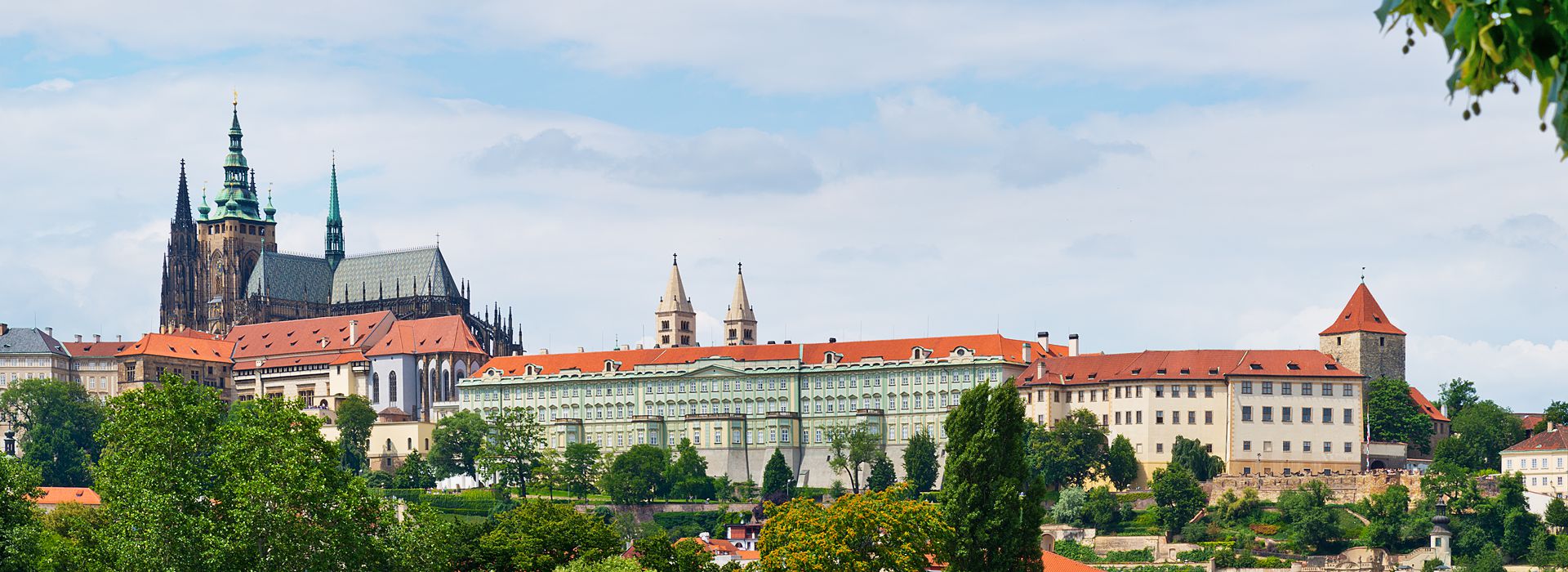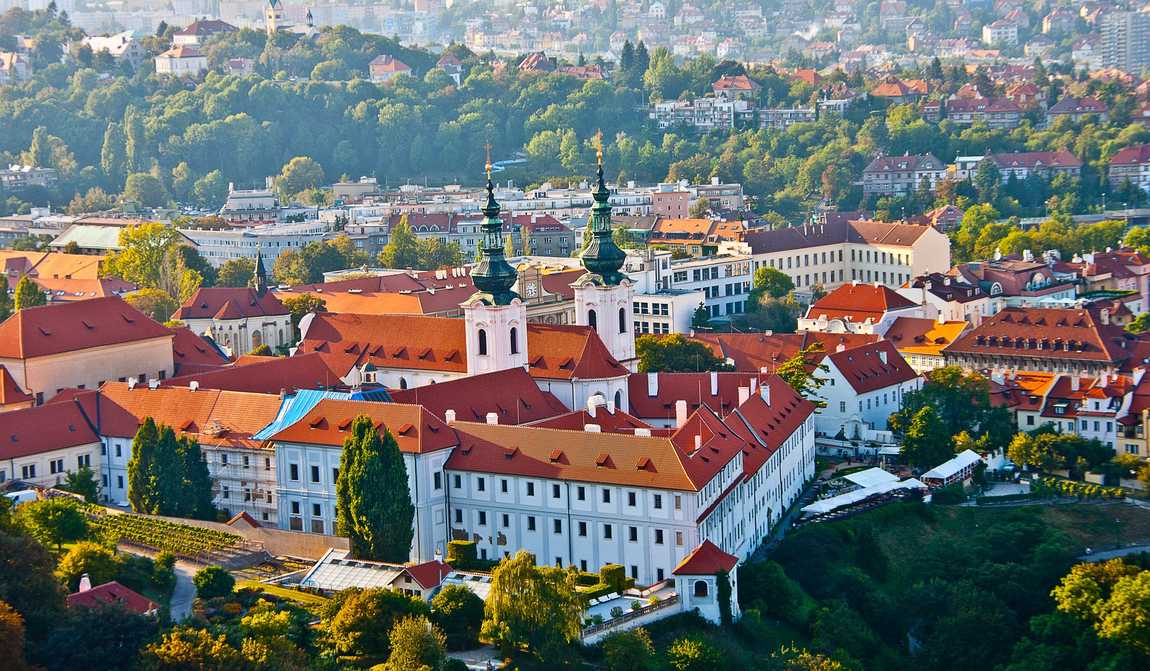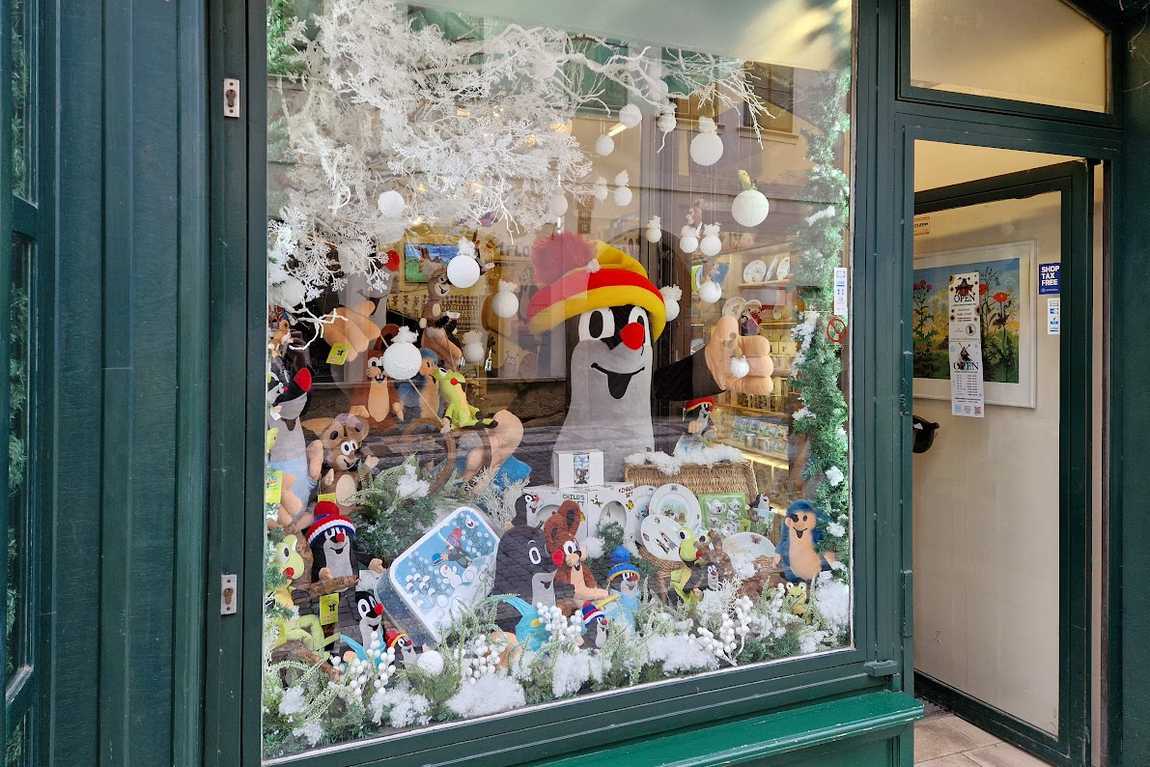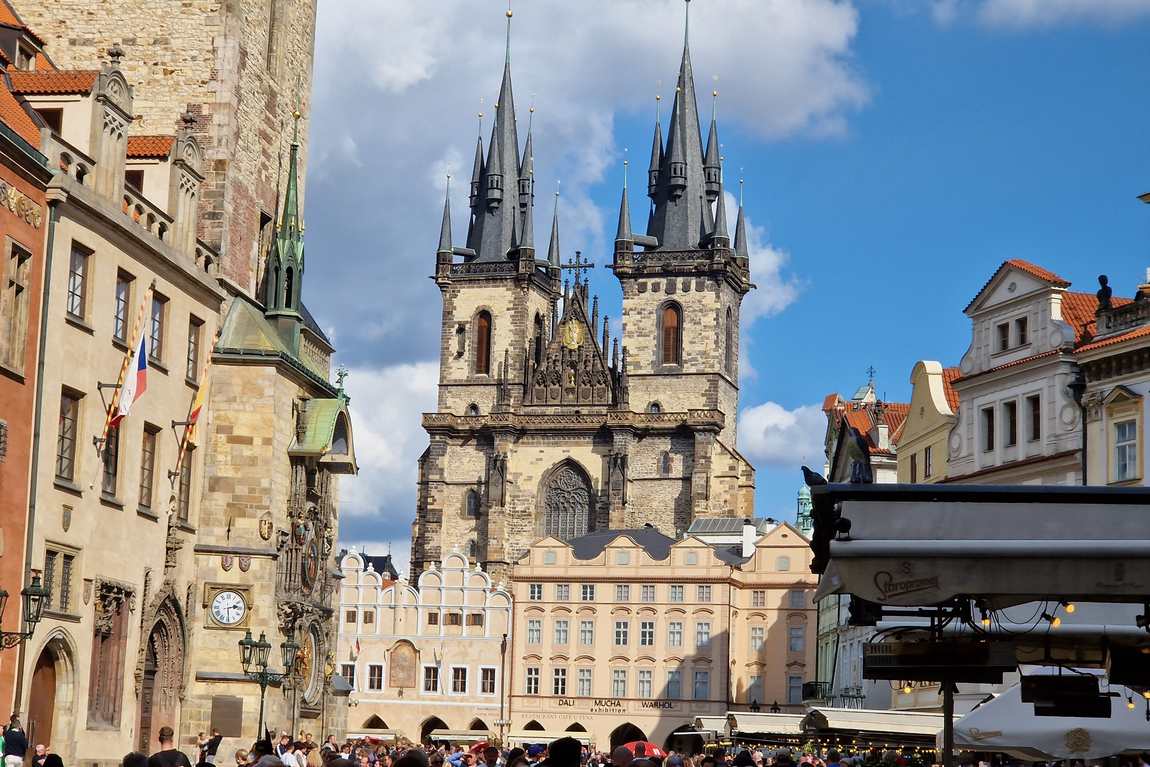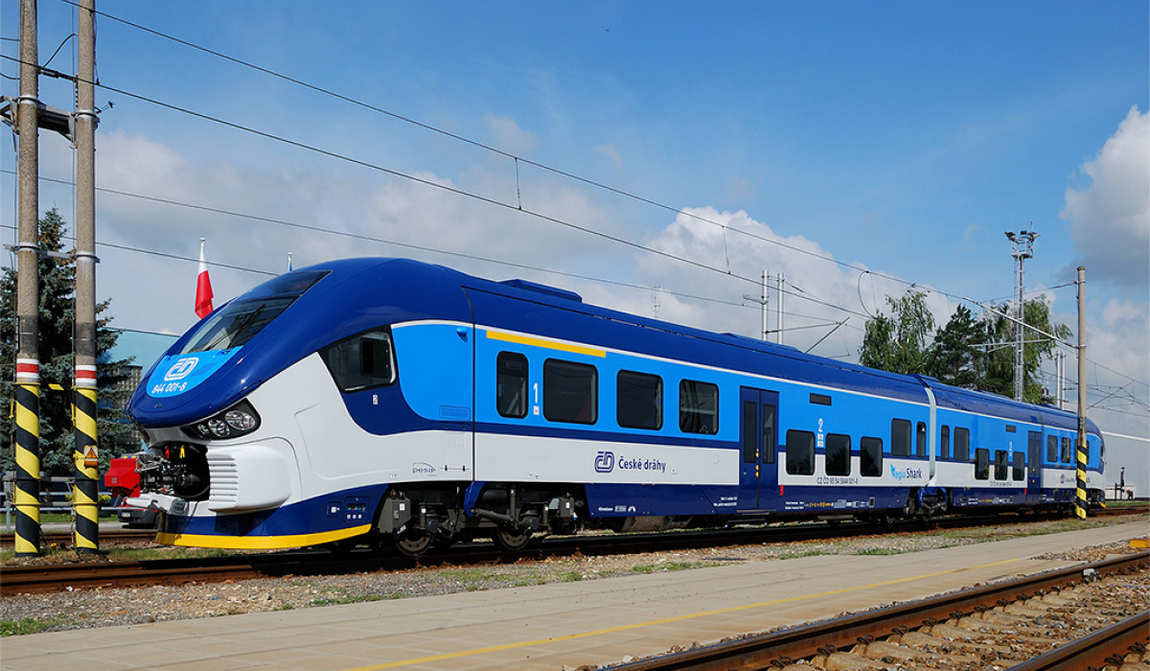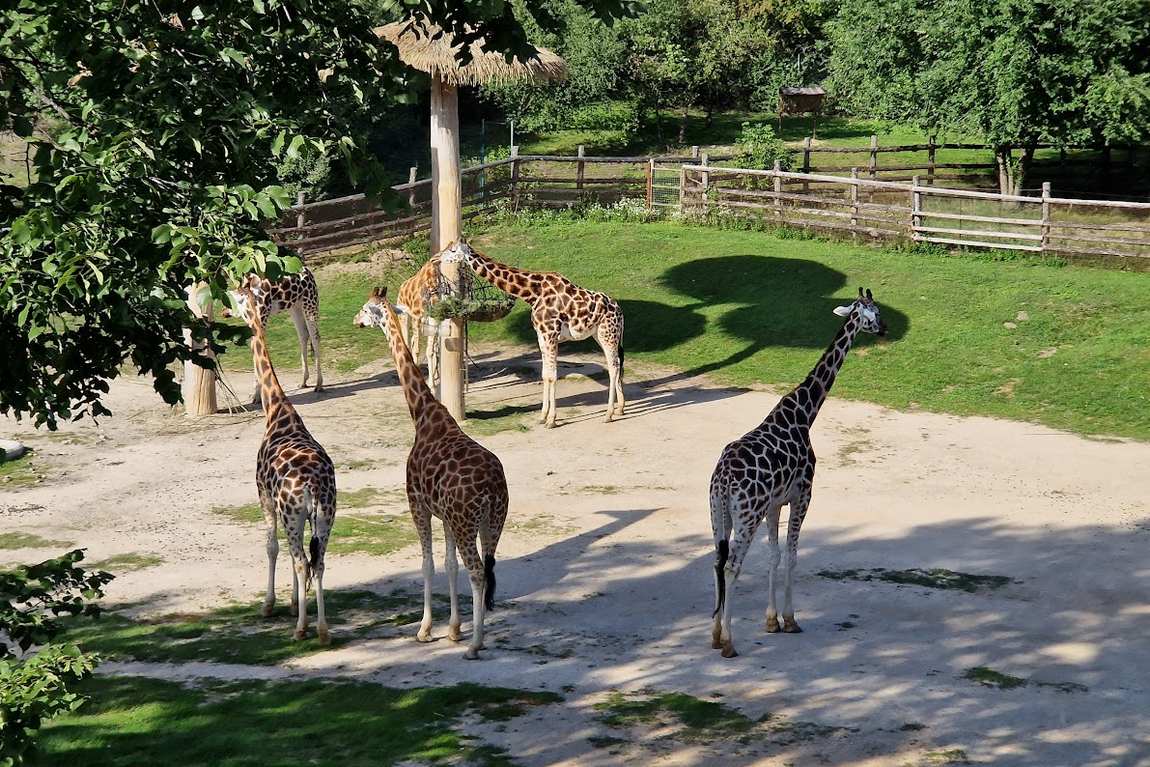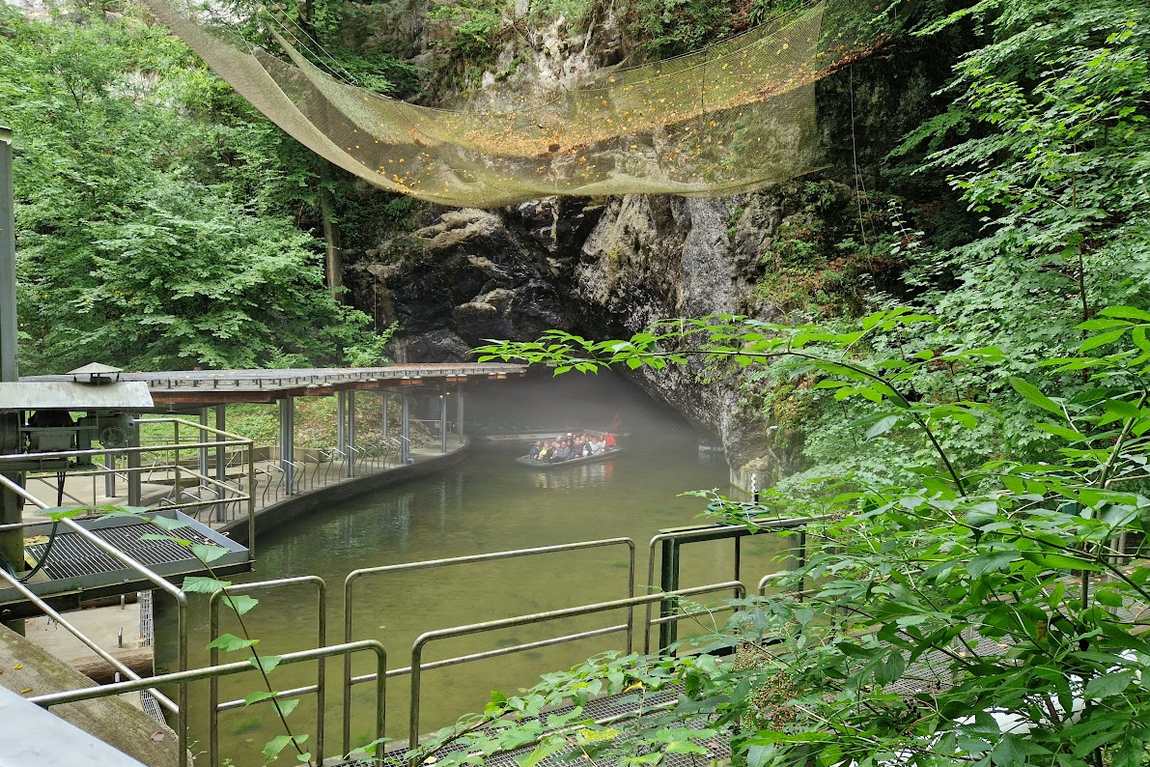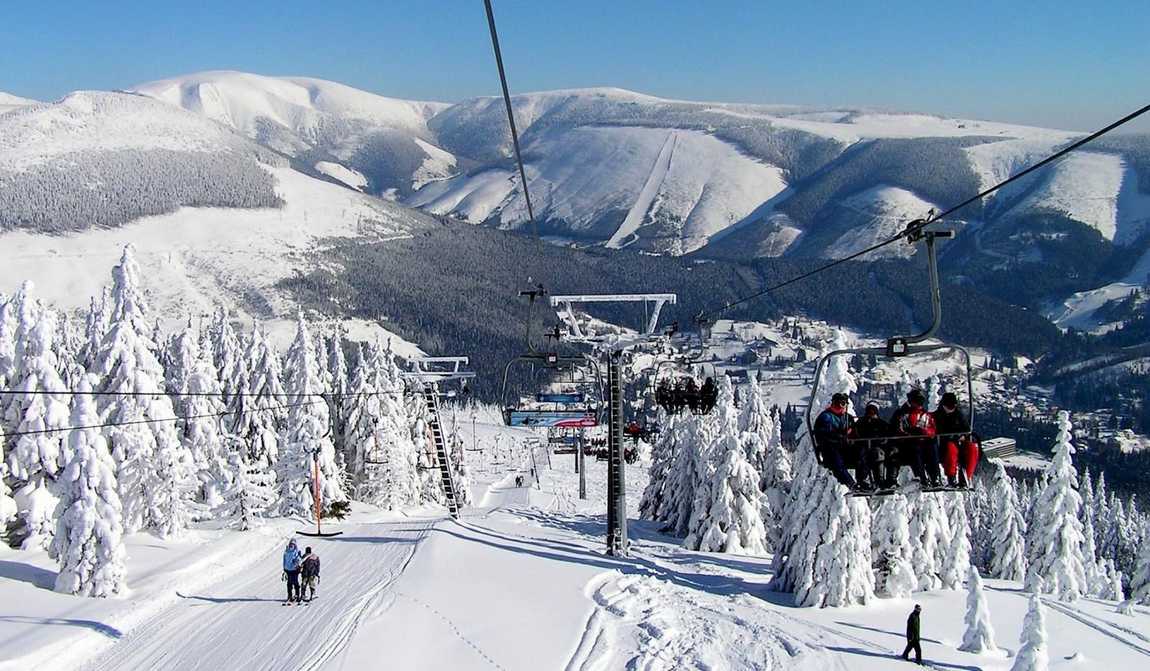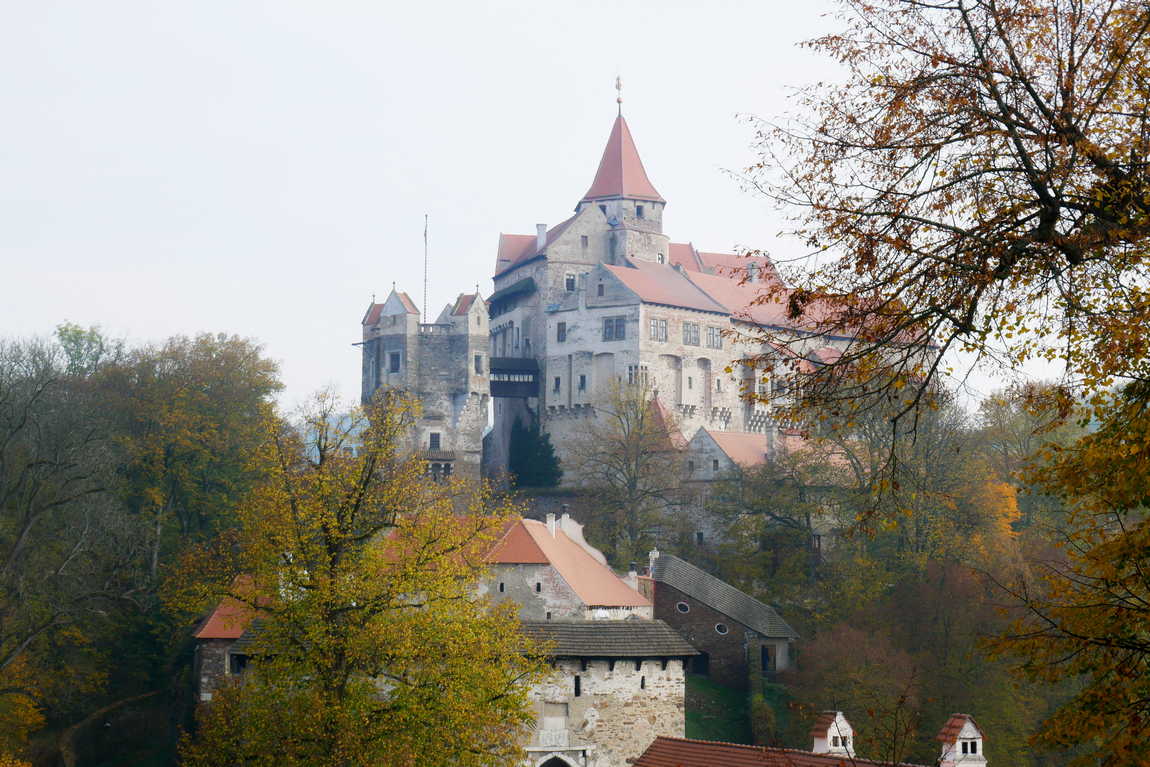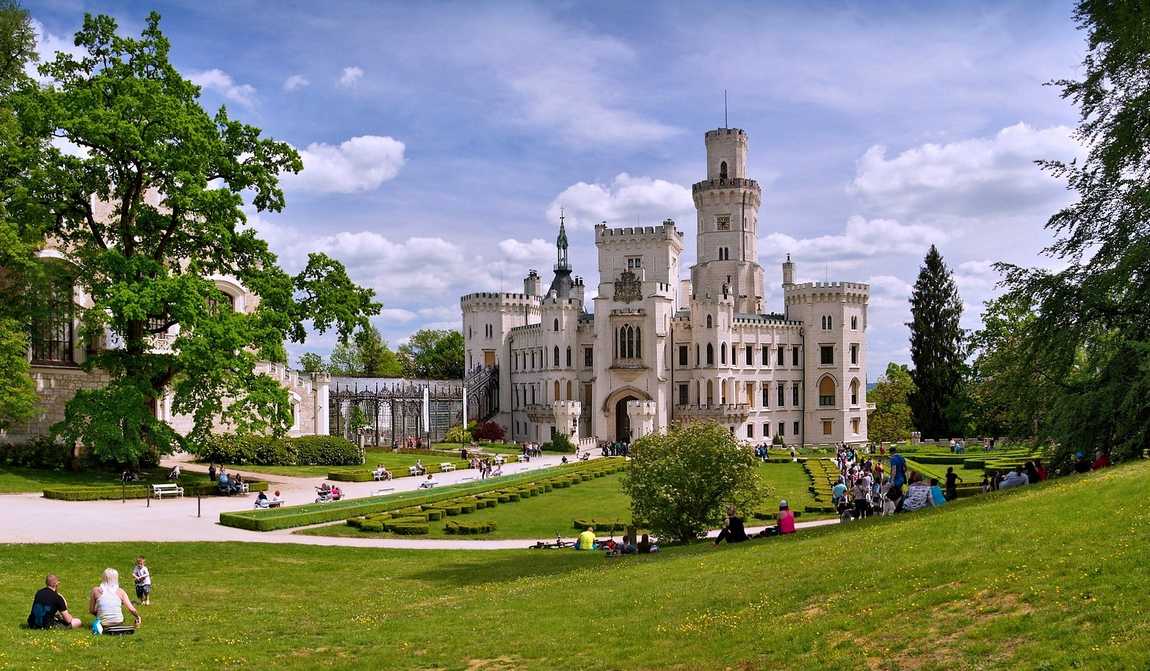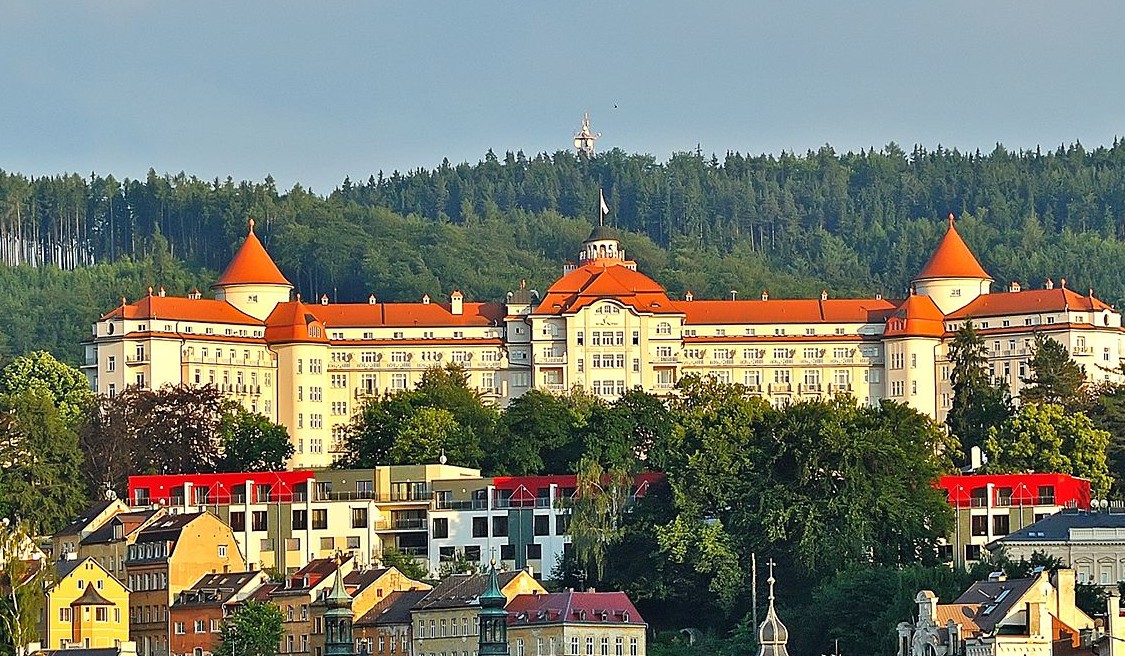For those who have not been to the Czech Republic, it still bears the stamp of a socialist camp country. This page of history cannot be crossed out — just like the struggle between the Celts and the Germans, the emergence of Czech tribes, the construction of Vysehrad and Prague Castle, being part of the Holy Roman Empire and under the rule of the Habsburgs, unification with Slovakia and independence.
However, is this what tourists think about when tasting Czech beer and dumplings with dipping sauce?
A family holiday in the Czech Republic has its charm: lots of beauty, walks, children's entertainment and no time limit — you can come to this country all year round. Find all practical information about holidays with children in the Czech Republic in Kidpassage's review.
Where is Czech Republic located on the world map?
The Czech Republic, also known as Czechia, is a state in Central Europe. It is bordered by Austria to the south, Poland to the north, Germany to the northwest and west, and Slovakia to the east. The Czech Republic is historically divided into three regions: Bohemia, Moravia, and a part of Silesia. The area is 78.866 thousand square kilometres. The population is 10.5 million people. The capital of the state is Prague.
The Czech Republic for Kids
Contrary to fears, travelling to the Czech Republic is in no way reminiscent of travelling back to the Soviet past. It is a European, cheerful, open for exploring the country with relatively affordable prices.
If you want to organise a holiday with your child with comfort, more impressions, and fewer expenses, the Czech Republic will be in the top three options.
Let's start our praise by saying that you can get to the Czech Republic relatively quickly, especially if you choose a plane as your means of transport.

A two or three-hour flight and you're already in Prague, and your child doesn't even have time to get tired. And since holidays in the Czech Republic are not limited to Prague, buses and trains will take you from the capital to any point in the country. And further, you will start to collect lots of impressions. Castles, museums, parks, lakes, caves, mineral springs — wherever you visit in the Czech Republic, all this will be in the vicinity or most within a radius of 100 kilometres.
A few unusual sights are added to the standard set (more about them in the "What to See" section).
And there's no shortage of family fun: instead of amusement parks, you'll find ropes parks, bobsleigh tracks and rafting (more options in the 'Things to do' and 'Outdoor recreation' sections).
Many people come to the Czech Republic with their children to go skiing and discover the benefits of thermal water.
Ski resorts in this country are not as large as those in Austria, but in terms of equipment and quality of slopes, they are not inferior to Austrian ones. Balneotherapy resorts compete with Austria in the same way.
Hotels in the Czech Republic can be described in one word: decent. They have created conditions for rest with infants, offer special deals for families with older children, and in general, you will find comfort and care, as expected in good hotels.
There are also excellent souvenirs for children in the Czech Republic: wooden or fabric figures of a cute mole from a Czech cartoon, marionette puppets, Christmas tree toys made of glass beads or a fundamental Merkur constructor.

Best time to travel
No one part of the year can be called a low season in the Czech Republic. In December, tourists are eager to see the magical Christmas fairs; in January-March — to go skiing; in April-September — to explore and drive through as many old towns as possible.
Slightly fewer travellers come to the country in late autumn, although there is no decrease in activity in the balneotherapy resorts.
What is the best time to enjoy your holiday in the Czech Republic? Summer is the most popular time for travelling, and hundreds of thousands of tourists want to see the country's main attractions and natural beauty. It is better to postpone your trip until May or September if possible. The weather is fine in late spring and early autumn, and there are relatively few tourists in the cities. It is also an excellent time to come to the Czech Republic with a baby.

But in the pre-Christmas period, you can hardly avoid the crowds — unless you go not to Prague but to some small town. However, the crowds are pleasant and festive, centred around Christmas creches, souvenir stalls and tents where aromatic Trdelník, a delightful pastry often seen as national pride, is baked.
A winter holiday with a child in the mountains should be carefully planned. The fact is that Czechs themselves love skiing, and in February and March, during the school holidays, entire families go to ski resorts. Choose January and the first half of February for your holiday to avoid crowds.
You can catch a short beach season if you come to the Czech Republic in July and August. The main thing is to be lucky with the weather: summer is equally generous in providing Czech resorts with sun and rain.
When choosing the time for your trip, it is helpful to look at the calendar of holidays and festivals. For example, at the end of May, Brno is coloured with fireworks — there is an international festival Ignis Brunensis.
At the end of June, Prague celebrates City Day. In July, Hradec Králové hosts the major rock festival Rock for People. In August, Pilsen gathers beer fans for a beer festival. On September 28th, the whole country celebrates St Wenceslas Day, the patron saint of the Czech Republic.
Weather and Climate
The mild climate of the Czech Republic is a gift for tourists who want to travel not only in summer. Moderate summer heat and low-snow winters with a bit of frost make it possible to rest in this country all year round, and the problem of a child's acclimatisation is eliminated.
The holiday season in the Czech Republic is divided into two parts: winter, skiing, and summer, designed for excursions or relaxing holidays. Winter, in this case, lasts from December to April, and summer — from May to September.
The weather in different parts of the country differs, sometimes significantly. For example, Prague is hot in the summer, Karlovy Vary is warm, while in Špindlerův Mlýn, there is no heat at all, and there are more cool days than warm ones.
Winter in the capital and the mineral spas is warm, foggy, and often snowless, while it is frosty and snowy in the mountains. Here is how the air temperature varies by month in different regions (the first indicator means night temperature, and the second indicator means day temperature).
| |
Prague |
Karlovy Vary |
Špindlerův Mlýn |
Brno |
| Jan. |
-2…+2°С |
-3…+1°С |
-4…-2°С |
-2…+1°С |
| Feb. |
-2…+2°С |
-4…+1°С |
-4…-2°С |
-2…+2°С |
| Mar. |
+2…+8°С |
0…+7°С |
-1…+4°С |
+3…+9°С |
| Apr. |
+6…+14°С |
+3…+13°С |
+4…+10°С |
+7…+15°С |
| May |
+9…+19°С |
+7…+18°С |
+8…+14°С |
+11…+19°С |
| Jun. |
+12…+22°С |
+10…+20°С |
+11…+18°С |
+14…+23°С |
| Jul. |
+15…+25°С |
+12…+23°С |
+14…+20°С |
+16…+26°С |
| Aug. |
+15…+25°С |
+12…+23°С |
+14…+20°С |
+16…+26°С |
| Sep. |
+11…+19°С |
+9…+18°С |
+10…+16°С |
+12…+20°С |
| Oct. |
+7…+13°С |
+5…+12°С |
+6…+10°С |
+8…+13°С |
| Nov. |
+3…+7°С |
+2…+6°С |
+2…+4°С |
+4…+7°С |
| Dec. |
+1…+4°С |
-1…+2°С |
-1…0°С |
0…+2°С |
If you are planning a summer holiday in the Czech Republic, take umbrellas and waterproof shoes: this is the rainiest time of the year. The least rainy days are in April, September and October.
In late autumn, there are few tourists in the Czech cities, while the season is just about to open in the mountains. By the end of December, the slopes of the Krkonoše Mountains are covered with a thick layer of snow, and the stable snow cover lasts until at least mid-March.
The time for the best holiday in the Czech Republic with children is considered to be summer. However, if we take into account the weather conditions, the best time for a trip is the end of spring and the beginning of autumn, and for a winter trip — January and February.
Medical Treatment and Wellness Holidays
The spa towns of the Czech Republic have been famous for two centuries. In the 19th century, members of the imperial families came to relax on vacation, which is why hotels and sanatoriums still resemble royal residences.

In addition to the natural resources of our time, tourist infrastructure, excellent treatment facilities, and a cultural programme have been added. Which Czech Republic resort should you choose to have a holiday with children and improve your health?
Karlovy Vary
It is the most famous balneotherapeutic spa. Hot water from 13 springs treats diseases of the digestive and endocrine systems (the fourteenth spring is jokingly called "Becherovka", produced in Karlovy Vary). The spa has treatment programmes for children.
Marianske Lazne
It is a specialised children's spa where diseases of the respiratory system, kidneys and urinary tract, musculoskeletal apparatus, and infections caused by metabolic disorders are treated. The water in Mariánské Lázně, unlike in Karlovy Vary, is cold.
In the region of the Czech Republic where Karlovy Vary and Mariánské Lázně are located, hundreds of healing springs are known. Therefore, there are several smaller springs in the vicinity of the two large spas: Františkovi Lazne, Lazne Kynžvart, Konstantinovi Lazne, Jáchymov, Klášterec nad Ohří.
Poděbrady
It is another renowned Czech spa where heart and vascular diseases are treated. Cold water saturated with carbon dioxide helps to dilate blood vessels and lower blood pressure. There is a specialised children's sanatorium in Poděbrady, and adult sanatoriums also have children's health programmes.
Food

Lovers of hearty meals and good beer praise Czech cuisine — and rightly so — but many Czech dishes are hard on children's stomachs.
For little tourists, look for vegetable soups or broth with noodles, chicken or turkey chops with boiled potatoes, potato pancakes — Bramboráky.
Schoolchildren may be offered the Czech specialities — potato mushroom soup (Czech Bramboračka) with smoked meat and mushrooms served in a loaf of bread, or Pečené vepřové koleno, the famous knuckle, so beloved in the Czech Republic and neighbouring countries.
You should look for authentic Czech cuisine in places where locals dine. Instead of "restaurant", the sign may say hostinec, pivnice or hospoda.
And neither kids nor adults can resist Czech sweets. At Christmas fairs, the air is filled with the aroma of freshly baked trdelnik. Dough is rolled into thin strips, wound around a spindle called a “trdlo”, glazed with sugar and grilled over open coals until the dough is cooked brown and the sugar caramelized. A variation of trdelník with an ice cream filling was popularized by Prague cafés.
In the pastry shops, which are called "cukrárna" here, children will be served Jablečný závin (puff pastry roll with apples) and dort (cake), eclair věneček or fruit ice cream zmrzlinový pohár, kolache (round sweet pastry with various fillings) or knedlíky, hearty cottage cheese dumplings with berries.
In Karlovy Vary and Mariánské Lázně, you must try the huge oplatki waffles with different flavours.
Transport in the Czech Republic
Public transport in the Czech Republic is very convenient for tourists: modern trains and buses travel throughout the country, and just a couple of hours of tireless journey separates Prague from other cities.

Only ski resorts cannot be reached by railway, but buses are common, and their fare is cheaper than trains. City transport in the Czech Republic also does not cause any complaints because it runs frequently, does not deviate from the schedule and provides comfort to all passengers.
There is a choice of what to take — metro, tram, bus, ferry, funicular — only in Prague. In other cities, there are usually several bus routes, cable cars and funiculars, and tourist trains in resorts.
There is a single ticket for all public transport (except for tourist trains), the price of which depends on the length of the journey and the travel zone.
It's more cost-effective and convenient to use a one-day ticket. The ticket is always valid from the moment of its marking (the marking machines are in the metro, on the trams and buses).
If you plan to use a taxi, do not take a taxi directly in the street and rather call one by phone. Use only taxis that are clearly identified and ask about the price to your destination beforehand, if it is too high, do not get on.
The average price per kilometre is 30-37 CZK; up to 60 CZK may be charged for boarding. All taxis have a meter, but if you catch a car on the street, the driver may "forget" about the meter and charge an unfair price.
Travelling around the Czech Republic is convenient to rent a car: offices of car rental companies are located at airports and in major cities.
However, it is usually impossible to get close to the sights by car, as the historical centre of many cities is closed for entry, overcrowded with cars, or accessible only to those drivers who have a special permit (it is pretty realistic to get it).



